Tom Watson's "Hickory Hill"
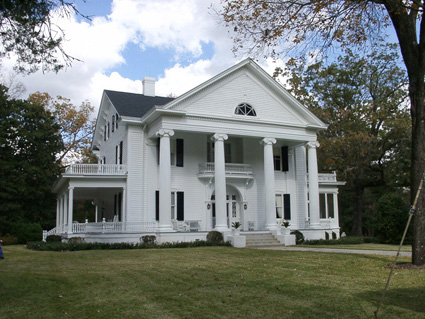
Hickory Hill
“Hickory Hill” is the home of Thomas E. Watson, (1856-1922). Tom Watson was a famous lawyer of
his day, a prolific writer, publisher and a member of the Georgia House of Representatives.
Watson was a statesman and leader of the Southern Populists. He ran for President on the Populist
Party ticket in 1904 and 1908. Watson served in the U.S. House of Representatives from 1890-1892
and the U.S. Senate from 1920 until his death in 1922.
Watson purchased the house he would christen “Hickory Hill” in 1900 and completed its extensive
renovation before occupying it in 1904. It was a home for a southern gentleman and was the
center of Watson’s private and public life. The house was closed to the public after Tom Watson’s
death in 1922. It remained in the family as a private residence until it was painstakingly
restored by the Watson-Brown Foundation and opened again to the public. The result is a handsome
monument to a man who put his mark on an era.
LMD was contracted to reproduce the wallpapers for the house using a wealth of evidence that
included photographs, fragmentary evidence and the oral history from Watson’s grand daughter
who was the last family member to live in the house. As is often the case, the real treasure
trove of information was in the attic. But this time it was not in a box or trunk but pasted
on the base boards and trim of the room. The grand children had been given the end rolls of
the wallpapers by the grand parents and told to “Go play in the attic.” They did so by pasting
the different strips of wallpaper all over the rooms. Subsequently the walls were removed
leaving only pieces and scraps. It was disjointed evidence but enough for LMD to piece together
a wealth of beautiful designs.
A total of 20 wallpapers were recreated by LMD for Hickory Hill and 12 came from “the treasures
in the attic”.
The Entry Hall
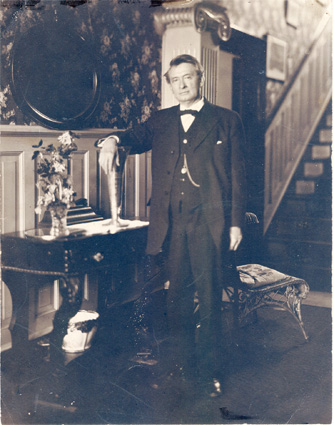
Tom Watson 1920
Photo Courtesy of the Watson Brown Foundation
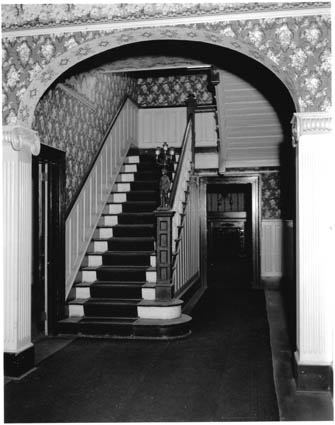
Entry Hall circa 1920
Photo Courtesy of the Watson Brown Foundation
The Entry Hall is always an important area in any formal house and Hickory Hill’s entry was
even more important since, in addition to the fragmentary evidence that was gleaned from the
house, there was a period portrait of Tom Watson standing in front of the beautiful wallpaper
in the hall.
The bouquets of roses seen in the photos were lovely but the tracery of gold metallic frames
would have been impossible to recreate with accuracy if there had not been fragments remaining
in the hall to guide the way.
As seen in the final beautiful wallpaper there were four different bouquets of roses in elegant
gilded frames with a secondary pattern in the field. The interweaving of the sprays of white
flowers help soften and connect the different elements of the design.
Although it is not visible in the first photograph used as reference, another one was subsequently
found that showed the matching frieze and bold ceiling paper that originally completed this
handsome suite of hall wallpapers.
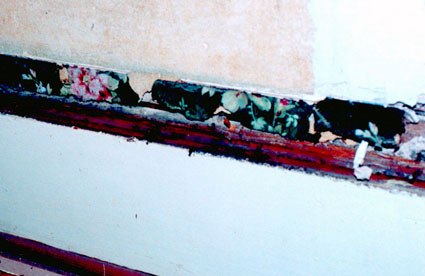
Hall Evidence
Photo Courtesy of the Watson Brown Foundation
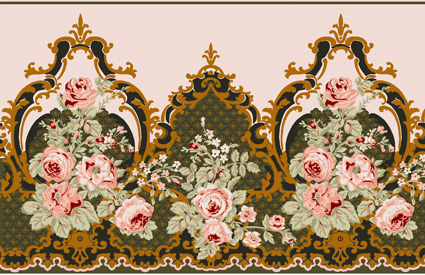
Hickory Hill Rose Frieze
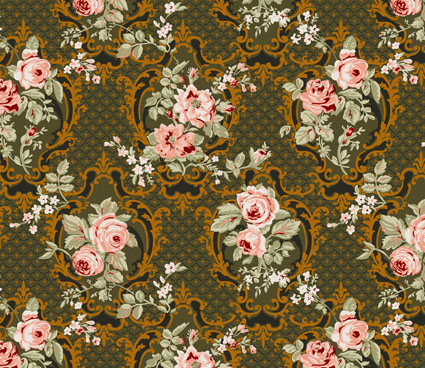
Hickory Hill Rose
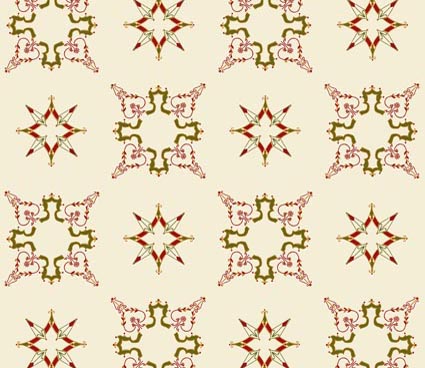
Serendipity
The restored Entry Hall is a gracious beginning to the tour of Tom Watson’s “Hickory Hill”
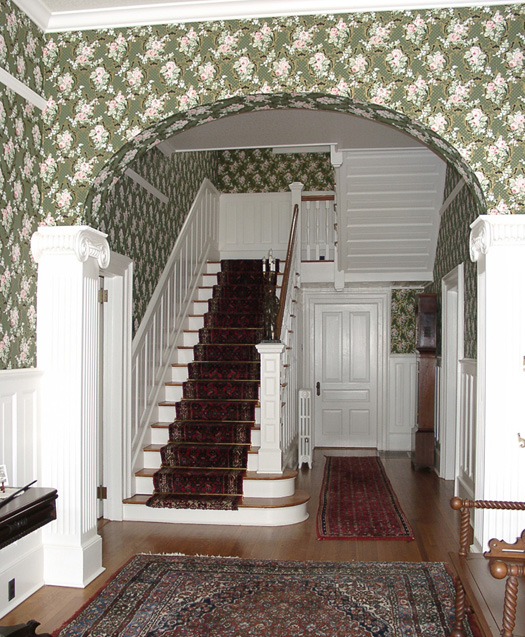
Hickory Hill Entry Hall
The Parlor
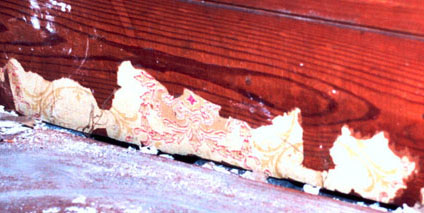
Ceiling Fragmentary Evidence from the Attic
Photo Courtesy of the Watson Brown Foundation
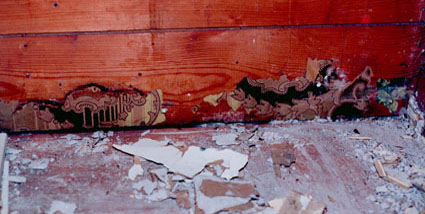
Frieze Fragmentary Evidence from the Attic
Photo Courtesy of the Watson Brown Foundation
The West Parlor is located to the right of the Hall and the papers used there were recreated
from relatively complete fragmentary evidence found on the baseboard area in the attic play room.
The Classic Medallion wallpaper used on the Parlor walls has bold stripes and swags in a style
that shows the interest in the flat style and textural effects that were starting to evolve
in the early Twentieth Century. The bold fleur de lis is a classic motif done in a more graphic
way.
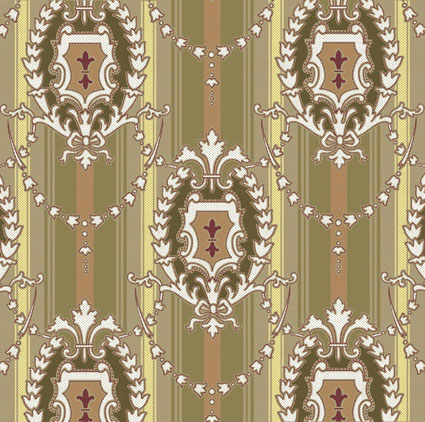
Classic Medallion
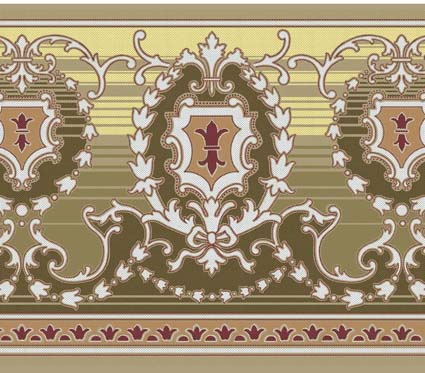
Classic Medallion Frieze
The frieze has a lighter, simpler background while still incorporating the medallions, swags
and ribbons seen in the sidewall but in this design the stripes are horizontal instead of vertical.
The ceiling paper has a delicate graphic rococo feel and tops the room in an elegant fashion
with a golden yellow color. It was customary for a ceiling paper in a suite to done in less
colors than in the sidewall design. As was the case in all the papers there is a heavy use
of metallics and pearls for an elegant shimmering effect.
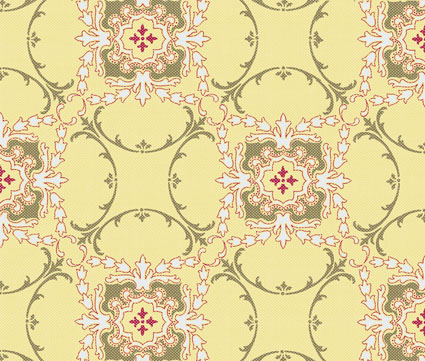
The Classic Medallion Ceiling Paper
The finished Parlor has a soft elegant glow that complements the adjacent Entry Hall welcoming
everyone to this Southern Gentleman’s home.
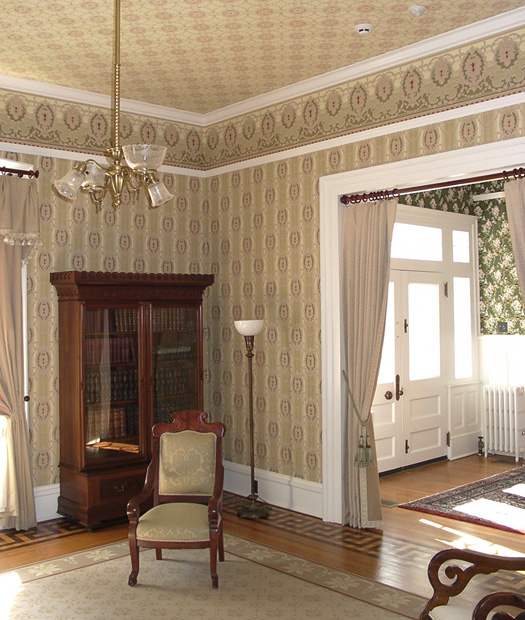
Tom Watson’s Parlor